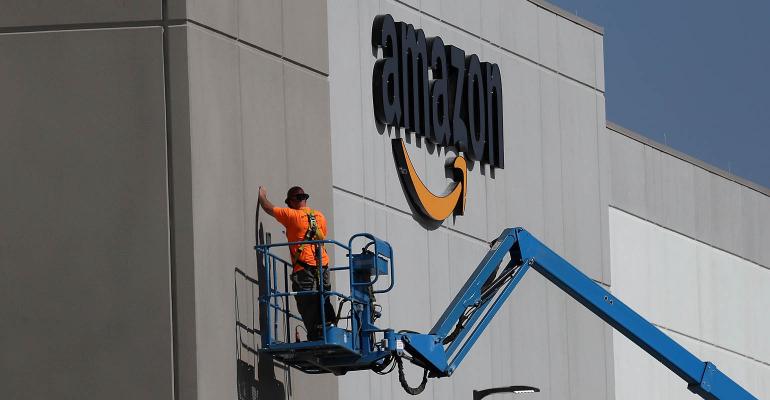Two driving forces in the tech economy—e-commerce titan Amazon and co-working giant WeWork—are driving much of the recent office leasing activity in the United States.
Data supplied to NREI by CoStar Portfolio Strategy shows Amazon and WeWork were among the leaders in office leasing from August 2016 through July 2017.
“Amazon has been growing its real estate footprint aggressively this cycle as the company continues to expand,” says Paul Leonard, managing consultant at CoStar, a provider of market data and analytics. “Generally, the tech sector has led the demand for office space since the end of the Great Recession, so it makes sense that a tech tenant would be at the top of the list. However, even tech has seen a deceleration in demand over the past year.”
Through the first half of 2017, net absorption of office space was down 26 percent compared with the first half of 2016, Leonard says.
“With the labor market tight due to already very low unemployment and a shrinking working age population, we believe demand will continue to decelerate over the next few years even if we do not face a recession,” he says.
That includes the tech sector, which has experienced a slight year-over-year decline in demand, he adds.
While overall demand is slipping, CoStar has seen a surge in office leasing activity involving class-A space, suggesting that tenants are favoring quality over quantity. Sixty percent of office leasing activity has focused on four- and five-star office buildings, even though those categories make up only 30 percent of total inventory, Leonard says.
Meanwhile, the TAMI sector—technology, advertising, media and information technology—has replaced FIRE (financial services, insurance and real estate) as the primary economic engine in central business districts (CBDs) of cities like New York, Boston and San Francisco, according to Michael Cohen, Tri-State regional president with real estate services company Colliers International. That’s in large part due to TAMI growing more rapidly and adding more jobs than the FIRE sector, he says.
“As long as the VC community will continue to fund [start-ups] and the public markets continue to support double-digit multiples, the TAMI sector will thrive. My fingers are crossed,” Cohen says.
Of the 10 most active office lessees during the one-year period covered by the CoStar data, six of the tenants are in the tech sector. CoStar identifies San Jose, Calif.; Seattle; San Francisco; Austin, Texas and Raleigh, N.C., as the top office markets for tech firms from the third quarter of 2016 through the second quarter of 2017.
CoStar characterizes WeWork as a services company, although it caters to tech start-ups.
In the following slideshow, NREI reveals the 10 most active office tenants from August 2016 through July 2017, based on the amount of square footage they leased. Some of the figures have been rounded.





